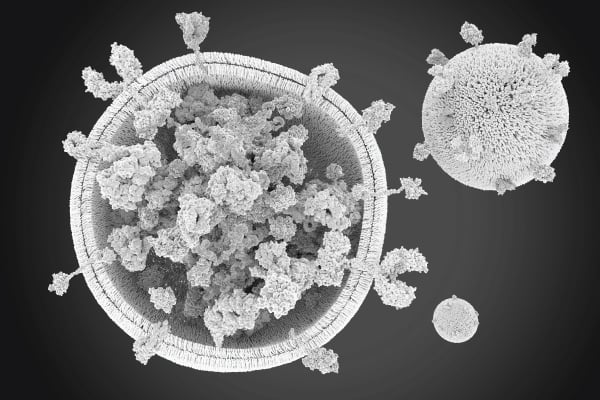Process Development
Monoclonal Antibodies Process Development
Monoclonal antibodies (mAbs) are vital biotechnology-derived therapeutics used in treating cancer, autoimmune diseases, allergic conditions, transplantation complications, and more. The rising demand for mAbs in therapeutic and diagnostic applications necessitates the expansion of manufacturing capacities and the enhancement of process efficiency and cost-effectiveness. Technological advancements are essential to achieving consistent, high-quality production while minimizing costs. Further improvements in antibody quality and the development of more efficient and economical production processes are imperative to meet these demands.
Talk to an expert
Cell lines are significant investments. Your newly created cell lines may synthesize a product of interest efficiently, but the therapeutics discovery process is far from over. Commercial production development involves optimizing growth media and feed to a high-producing cell line, harvesting your product of interest, while analyzing the product for quality control. Every step of this process involves repeated cycles of trial and error. The entire workflow must be consistent and reproducible, while maximizing product yield.
Cell Line Development
mAbs are most commonly obtained from Chinese Hamster Ovary (CHO) cells. These cells are indispensable for enabling complex post-translational modifications, such as glycosylation, which are crucial for mAb efficacy. Genetic manipulation of CHO cells further enhances productivity, solidifying their role as a cornerstone in efficient and scalable mAb production. Integration of advanced genetic engineering tools improves the precision and efficiency of gene insertion, further optimizing the production process. Refining culture conditions, including media composition, temperature, pH and feeding strategies, significantly boosts protein yield while ensuring cell line stability. Regular monitoring of cell viability allows for the selection of viable and reproducible cells. Additionally, employing stable expression systems ensures the selection of high gene copy numbers and stable integration sites, enabling consistent and high-level expression of the target protein.
Process Development
The manufacturing technology for mAbs is broadly categorized into development and optimization of upstream and downstream processes. Upstream process development encompasses media and feed development, bioprocess design, and scale-up, all aimed at achieving high product titer, enhanced productivity, and consistent quality. Optimization efforts primarily focus on extending culture longevity, thereby increasing the specific antibody production rate and overall yield. Online monitoring and outcome prognostics further enhance system control and reproducibility, ensuring a robust and reliable production process.
Media Development
Media development is integral to advancing mAb production by improving cell productivity, growth
dynamics and product quality. Due to the inherent complexity of cell lines, processes and media
components, alongside their intricate interactions with cellular metabolic pathways, media optimization
demands customized solutions. Effective strategies include single-component titration, media blending,
spent media analysis and automated screening.
Progress in media formulation, cell culture conditions, and feeding strategies has led to
substantial increases in protein yields. A well-balanced composition of micronutrients, such as
vitamins, amino acids, and trace metals, is fundamental to sustaining robust cell growth and ensuring
high-quality protein synthesis. In fed-batch processes, medium development typically encompasses batch
medium formulation, feed concentrate preparation and the refinement of feeding strategies.
Feed Optimization
Feed media development strategies prioritize optimizing basal medium concentration, managing nutrient
consumption, controlling impurity accumulation, and balancing cell growth with volumetric productivity.
Variability in impurity concentration and composition, influenced by culture conditions, necessitates
precise adjustments to enhance production efficiency.
A common approach involves concentrating the basal medium; however, advanced feed optimization
requires addressing nutrient uptake, by-product accumulation, and the trade-off between supporting cell
growth and maximizing productivity. By-products such as lactate and ammonia can be minimized by
maintaining low concentrations of glucose and glutamine through frequent or continuous feeding. Stepwise
bolus addition of feed solution remains widely adopted in the industry for its simplicity and
scalability, often coupled with statistical design of experiments for systematic refinement.
Automation has further enhanced this process, with benchtop miniature bioreactors and cell
viability analyzers from Beckman Coulter Life Sciences to streamline data collection and enable
real-time process optimization.
Harvesting
Upstream and downstream bioprocessing operations are interconnected through the cell harvesting step, a
critical unit operation designed to remove cells, cell debris, and other impurities. The selection of an
appropriate harvesting technology is vital, as the outcomes of this step directly influence purification
efficiency.
Centrifugation is among the most commonly employed methods for cell harvesting. By exploiting the
density differences between solids and fluids, centrifugation accelerates sedimentation, providing a
rapid and straightforward approach. This technique is particularly effective for processing large
populations of cultured cells, enabling the maximization of cell recovery within a shorter timeframe.
Analytical Development
Late-stage process development prioritizes enhancing process yield, robustness, scalability, and regulatory compliance. Ensuring product quality and maintaining comparability are critical to safeguarding patient safety. Advanced analytical techniques, including cell-based assays such as the Valita Titer microplates and analytical ultracentrifugation, play a pivotal role in achieving consistent quality control. These tools also streamline production processes and facilitate efficient technology transfer.
Related Content
Valita, Valita Titer and the ValitaCell logo are trademarks or registered trademarks of ValitaCell in the United States and other countries. ValitaCell is a Beckman Coulter Company.
Our Team is Ready to Help
Tell us a bit about yourself and what you would like to achieve.
Our experts will be in touch soon.



















